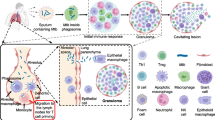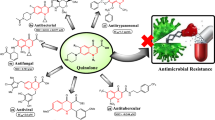Abstract
Dose selection for rifampin in the treatment of active pulmonary tuberculosis (TB) illustrates some of the challenges for dose optimization within multidrug therapies. Rifampin-based anti-TB regimens are often combined with antiretroviral therapies to treat human immunodeficiency virus (HIV) coinfection. The potent cytochrome P450 (CYP) enzyme inducing properties of rifampin give rise to significant drug-drug interactions, the minimization of which by limiting the dose, conflicts with the maximization of bacterial killing by increasing the dose. Such multiple and conflicting objectives lead to a set of trade-off optimal solutions for dose optimization rather than a single best solution. Here, we combine pharmacokinetic/pharmacodynamic (PK/PD) modeling with multiobjective optimization to quantitatively explore trade-offs between therapeutic and adverse effects of optimal dosing for the example of rifampin in TB-infected mice. The PK/PD model describes rifampin concentrations in plasma and liver following oral administration together with hepatic CYP enzyme induction and bacterial killing kinetics. We include optimization objectives descriptive of antimicrobial efficacy, CYP-mediated drug-drug interactions, and drug exposure-dependent toxicity. Results show non-conventional dosing scenarios that allow for increased efficacy relative to uniform dosing without increasing drug-drug interactions. Additionally, we find currently employed dosages for rifampin to be nearly optimal with respect to trade-offs between efficacy and toxicity. While limited by the accuracy and applicability of the PK/PD model, these results provide an avenue for experimental investigation of complex dose optimization problems. This method can be extended to include additional drugs and optimization objectives, and may provide a useful tool for individualized medicine.




Similar content being viewed by others
References
Centers for Disease Control and Prevention (2003). Treatment of tuberculosis, American Thoracic Society, CDC, and Infectious Disease Society of America. MMWR Recomm Rep 52(RR-11):1–77
Constans P, Baron A, Parrot R, Coury C (1972) A study of 200 cases of active, recent pulmonary tuberculosis treated with rifampin-isoniazid. A follow-up history of one and one-half to three years. Chest 61(6):539–549
Raleigh JW (1972) Rifampin: clinical experience with a new anti-tuberculosis drug. Trans Am Clin Climatol Assoc 83:104–112
van Ingen J, Aarnoutse RE, Donald PR, Diacon AH, Dawson R, Gillespie SH, Boeree MJ (2011) Why do we use 600 mg of rifampicin in tuberculosis treatment? Clin Infect Dis 52(9):e194–199
Steingart KR, Jotblad S, Robsky K, Deck D, Hopewell PC, Huang D, Nahid P (2011) Higher-dose rifampin for the treatment of pulmonary tuberculosis: a systematic review. Int J Tuberc Lung Dis 15(3):305–316
Harvard University Faculty of Medicine (2014) Trial of High-Dose Rifampin in Patients With TB (HIRIF), In: ClinicalTrials.gov [Internet], Bethesda (MD): National Library of Medicine (US). Available from: http://clinicaltrials.gov/ct2/show/NCT01408914Z, nLM Identifier: NCT01408914
Radboud University (2013) Pharmacokinetics and pharmacodynamics of high versus standard dose rifampicin in patients with pulmonary tuberculosis (High RIF), In: ClinicalTrials.gov [Internet], Bethesda (MD): National Library of Medicine (US). Available from: http://clinicaltrials.gov/ct2/show/results/NCT00760149, nLM Identifier: NCT00760149
Radboud University (2014) Safety, tolerability, extended early bactericidal activity and PK of higher doses rifampicin in adults with pulmonary TB (HR1) In: ClinicalTrials.gov [Internet], Bethesda (MD): National Library of Medicine (US). Available from: http://clinicaltrials.gov/ct2/show/results/NCT00760149, nLM Identifier: NCT00760149
Marais BJ, Lonnroth K, Lawn SD, Migliori GB, Mwaba P, Glaziou P, Bates M, Colagiuri R, Zijenah L, Swaminathan S, Memish ZA, Pletschette M, Hoelscher M, Abubakar I, Hasan R, Zafar A, Pantaleo G, Craig G, Kim P, Maeurer M, Schito M, Zumla A (2013) Tuberculosis comorbidity with communicable and non-communicable diseases: integrating health services and control efforts. Lancet Infect Dis 13(5):436–448
Dooley KE, Flexner C, Andrade AS (2008) Drug interactions involving combination antiretroviral therapy and other anti-infective agents: repercussions for resource-limited countries. J Infect Dis 198(7):948–961
Dooley KE, Chaisson RE (2009) Tuberculosis and diabetes mellitus: convergence of two epidemics. Lancet Infect Dis 9(12):737–746
Sousa M, Pozniak A, Boffito M (2008) Pharmacokinetics and pharmacodynamics of drug interactions involving rifampicin, rifabutin and antimalarial drugs. J Antimicrob Chemother 62(5):872–878
Baciewicz AM, Chrisman CR, Finch CK, Self TH (2013) Update on rifampin, rifabutin, and rifapentine drug interactions. Curr Med Res Opin 29(1):1–12
Centers for Disease Control and Prevention (2013) Managing drug interactions in the treatment of HIV-related tuberculosis. [online]. 2013. Available from: www.cdc.gov/tb/TB_HIV_Drugs/default.htm
Tostmann A, Boeree MJ, Aarnoutse RE, de Lange WC, van der Ven AJ, Dekhuijzen R (2008) Antituberculosis drug-induced hepatotoxicity: concise up-to-date review. J Gastroenterol Hepatol 23(2):192–202
Satyaraddi A, Velpandian T, Sharma SK, Vishnubhatla S, Sharma A, Sirohiwal A, Makharia GK, Sinha S, Biswas A, Singh S (2014) Correlation of plasma anti-tuberculosis drug levels with subsequent development of hepatotoxicity. Int J Tuberc Lung Dis 18(2):188–195
Kwara A, Flanigan TP, Carter EJ (2005) Highly active antiretroviral therapy (HAART) in adults with tuberculosis: current status. Int J Tuberc Lung Dis 9(3):248–257
Collette Y, Siarry P (2003) Multiobjective optimization: principles and case studies. Decision engineering. Springer, Berlin
Marler R, Arora J (2004) Survey of multi-objective optimization methods for engineering. Struct Multidiscip Optim 26(6):369–395
Deb K et al (2001) Multi-objective optimization using evolutionary algorithms, vol 2012. John Wiley & Sons, Chichester
Raybon JJ, Pray D, Morgan DG, Zoeckler M, Zheng M, Sinz M, Kim S (2011) Pharmacokinetic-pharmacodynamic modeling of rifampicin-mediated Cyp3a11 induction in steroid and xenobiotic X receptor humanized mice. J Pharmacol Exp Ther 337(1):75–82
Vaddady PK, Lee RE, Meibohm B (2010) In vitro pharmacokinetic/pharmacodynamic models in anti-infective drug development: focus on TB. Future Med Chem 2(8):1355–1369
Charles River Laboratories Inc (2006) Charles River Laboratories Research Models & Services. Available from: http://www.criver.com
Jayaram R, Gaonkar S, Kaur P, Suresh BL, Mahesh BN, Jayashree R, Nandi V, Bharat S, Shandil RK, Kantharaj E, Balasubramanian V (2003) Pharmacokinetics-pharmacodynamics of rifampin in an aerosol infection model of tuberculosis. Antimicrob Agents Chemother 47(7):2118–2124
Bauer B, Reynolds M (2008) Recovering data from scanned graphs: performance of Frantz’s g3data software. Behav Res Methods 40(3):858–868
Frantz J (2012) G3data, Version 1.5.2, Software, Available from: https://github.com/pn2200/g3data.git
Gilks WR, Best N, Tan K (1995) Adaptive rejection Metropolis sampling within Gibbs sampling. Appl Stat 44:455–472
Zitzler E, Laumanns M, Bleuler S (2004) A tutorial on evolutionary multiobjective optimization. In: Gandibleux X (ed) Metaheuristics for multiobjective optimisation. Springer, Berlin, pp 3–37
Bois FY, Maszle DR (1997) MCSim: a Monte Carlo simulation program. J Stat Softw 2(i09):1–60
Hindmarsh AC (1983) ODEPACK, A Systematized Collection of ODE Solvers, R.S Stepleman et al. (eds.), North-Holland, Amsterdam, (vol. 1 of), pp. 55–64. IMACS transactions on scientific computation 1:55–64
Deb K, Pratap A, Agarwal S, Meyarivan T (2002) A fast and elitist multiobjective genetic algorithm: NSGA-II. IEEE Trans Evol Comput 6(2):182–197
R Core Team (2014) R: A Language and Environment for Statistical Computing. R Foundation for Statistical Computing, Vienna, Austria. Available from: http://www.R-project.org/
Plummer M, Best N, Cowles K, Vines K (2006) CODA: Convergence diagnosis and output analysis for MCMC. R news 6(1):7–11
Gelman A, Carlin JB, Stern HS, Rubin DB (2003) Bayesian data analysis, 2nd edn. Chapman and Hall/CRC, Boca Raton
De Groote MA, Gilliland JC, Wells CL, Brooks EJ, Woolhiser LK, Gruppo V, Peloquin CA, Orme IM, Lenaerts AJ (2011) Comparative studies evaluating mouse models used for efficacy testing of experimental drugs against Mycobacterium tuberculosis. Antimicrob Agents Chemother 55(3):1237–1247
Chang KC, Leung CC, Grosset J, Yew WW (2011) Treatment of tuberculosis and optimal dosing schedules. Thorax 66(11):997–1007
Mouton JW, Ambrose PG, Canton R, Drusano GL, Harbarth S, MacGowan A, Theuretzbacher U, Turnidge J (2011) Conserving antibiotics for the future: new ways to use old and new drugs from a pharmacokinetic and pharmacodynamic perspective. Drug Resist Updat 14(2):107–117
Drusano GL, Ambrose PG, Bhavnani SM, Bertino JS, Nafziger AN, Louie A (2007) Back to the future: using aminoglycosides again and how to dose them optimally. Clin Infect Dis 45(6):753–760
Ambrose PG, Bhavnani SM, Rubino CM, Louie A, Gumbo T, Forrest A, Drusano GL (2007) Pharmacokinetics-pharmacodynamics of antimicrobial therapy: it’s not just for mice anymore. Clin Infect Dis 44(1):79–86
Steuernagel O, Polani D (2010) Multiobjective optimization applied to the eradication of persistent pathogens. IEEE Trans Evol Comput 14(5):759–765
Heris SMK, Khaloozadeh H (2011) Open-and closed-loop multiobjective optimal strategies for HIV therapy using NSGA-II. IEEE Trans Biomed Eng 58(6):1678–1685
Petrovski A, McCall J (2001) Multi-objective optimisation of cancer chemotherapy using evolutionary algorithms. In: Deb K, Goel T (eds) Evolutionary multi-criterion optimization. Springer, Berlin, pp 531–545
Deb K, Mitra K, Dewri R, Majumdar S (2004) Towards a better understanding of the epoxy-polymerization process using multi-objective evolutionary computation. Chemical engineering science 59(20):4261–4277
Dooley KE, Nuermberger EL, Diacon AH (2013) Pipeline of drugs for related diseases: tuberculosis. Curr Opin HIV AIDS 8(6):579–585
Martínez E, Collazos J, Mayo J (1999) Hypersensitivity reactions to rifampin: pathogenetic mechanisms, clinical manifestations, management strategies, and review of the anaphylactic-like reactions. Medicine 78(6):361–369
Zhang Y, Yew WW, Barer MR (2012) Targeting persisters for tuberculosis control. Antimicrob Agents Chemother 56(5):2223–2230
Rosenthal IM, Tasneen R, Peloquin CA, Zhang M, Almeida D, Mdluli KE, Karakousis PC, Grosset JH, Nuermberger EL (2012) Dose-ranging comparison of rifampin and rifapentine in two pathologically distinct murine models of tuberculosis. Antimicrob Agents Chemother 56(8):4331–4340
Katsube T, Yano Y, Wajima T, Yamano Y, Takano M (2010) Pharmacokinetic/pharmacodynamic modeling and simulation to determine effective dosage regimens for doripenem. J Pharm Sci 99(5):2483–2491
Lesko LJ, Schmidt S (2012) Individualization of drug therapy: history, present state, and opportunities for the future. Clin Pharmacol Ther 92(4):458–466
Zumla AI, Gillespie SH, Hoelscher M, Philips PP, Cole ST, Abubakar I, McHugh TD, Schito M, Maeurer M, Nunn AJ (2014) New antituberculosis drugs, regimens, and adjunct therapies: needs, advances, and future prospects. Lancet Infect Dis 14(4):327–340
Acknowledgments
The author thanks Mary Ann De Groote and Scott Irwin (Colorado State University (CSU)) for helpful discussions, Raymond Yang and Anne Lenaerts (CSU) for helpful suggestions and review of the manuscript, Ole Steuernagel and Daniel Polani (University of Hertfordshire) for helpful suggestions regarding NSGA II, and Kenneth “KJ” Sullivan for helpful discussions on genetic algorithms. This work was supported by National Institutes of Health Grant Number K25AI089945.
Author information
Authors and Affiliations
Corresponding author
Rights and permissions
About this article
Cite this article
Lyons, M.A. Computational pharmacology of rifampin in mice: an application to dose optimization with conflicting objectives in tuberculosis treatment. J Pharmacokinet Pharmacodyn 41, 613–623 (2014). https://doi.org/10.1007/s10928-014-9380-2
Received:
Accepted:
Published:
Issue Date:
DOI: https://doi.org/10.1007/s10928-014-9380-2




